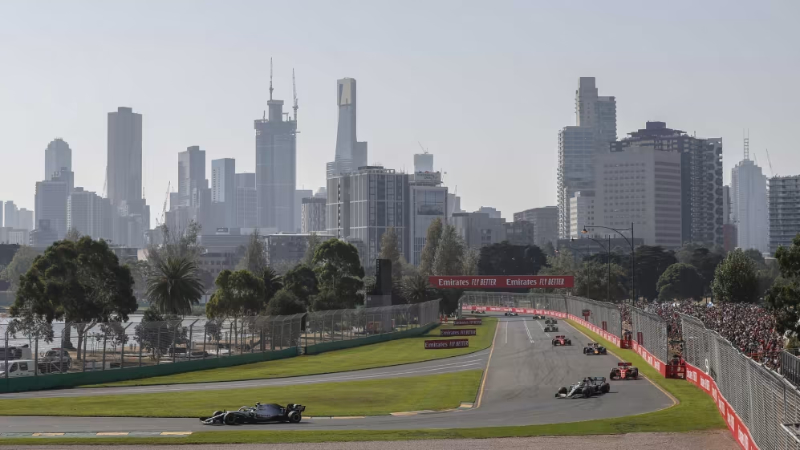The long overdue introduction of Fuel Efficiency Standards in Australia is meeting with the usual resistance from fossil fuel lobbyists and car enthusiasts. The Melbourne Grand Prix is an annual reminder of the deceit, Sarah Russell reports.
During question time in Federal Parliament recently, Liberal MP for Flinders, Zoe McKenzie, claimed that a fuel efficiency standard would increase the price of top-selling cars.
It was a demonstrably untrue statement. When her claims were fact-checked, they could not be authenticated. During the two decades in which fuel efficiency standards were tightened in the US, statistical analysis of vehicle prices from 2003 to 2021 found “no systemic, statistically significant increase in inflation-adjusted vehicle prices.”
In response to McKenzie’s misinformation, Zoe Daniels, Independent MP for Goldstein, referred to Standing Order 100: “Questions must not contain statements of fact unless they can be authenticated.”
Unfortunately, our political landscape is littered with misinformation and disinformation. We saw this during last year’s Voice to Parliament Referendum and, more recently, the Dunkley by-election. Both were led by the misinformation peddlers in chief, Advance Australia, who are currently running ads campaigning against the Government’s introduction of new Vehicle Efficiency Standards, calling it a “Ute Tax” while ignoring the facts.
Misinformation in politics is not a new phenomenon, however; neither is politicians’ fascination with fast cars.
The Melbourne Grand Prix
Three decades ago, then Premier Jeff Kennett told the Herald Sun (1993) that the Victorian taxpayers would not be asked to meet the cost of the grand prix, with the state government only prepared to act as guarantor for loans required to establish the race. This was not true.
Victorian taxpayers have paid $1 billion to host the four-day Formula 1 car race so far, and the bill is growing. The car race is now costing Victorians more than $100 million annually.
Despite such excessive costs, the Victorian government and the Australian Grand Prix Organisation claim there are economic benefits to holding the race in Melbourne. These claims have been repeated over and over but rarely challenged. Most people accept the spin.
As The Age columnist Greg Baum once noted:
When it comes to fake news, the Grand Prix Corporation makes Donald Trump look like an apprentice.
Such fake news was again evident in a recent media release spruiking the event. The Victorian Minister for Tourism, Sport and Major Events, Steve Dimopoulos, claimed: “The event is an epic boost for local jobs, visitation and our economy.” Not true, as the facts show.
Melbourne Formula One Grand Prix: beyond the spin the numbers don’t stack up
The Grand Prix is a financial car crash for Victoria. Independent cost-benefit analyses, first by the Victorian Auditor General and then later by Rod Campbell (now of The Australia Institute), have proven this time and again.
Even Bernie Ecclestone, the man who negotiated the deal in the first place, agreed that the Grand Prix was ripping off ($) Victorians.
Consultants and fake data
Yet the government continues to commission its consultants (EY) to undertake “utterly discredited” economic ‘impact studies’. EY’s report estimated that the economic impact in 2023 ($) was “$268 million, including $144 million in direct expenditure.” EY’s ‘impact studies’ use a multiplier formula that conveniently ignores the costs.
In 2023, the car race cost $198 million to stage, including $101 million in government subsidies. This is not an economic ‘boost’ for our state. Instead, it drains resources that could have been spent on health, education, and public transport.
In 2011, Jeff Kennett claimed in the Herald Sun that “[The Grand Prix] was watched last weekend by 500 million people in 110 countries.” Again, this was not true. Rather than citing the number of people who actually watched the Australian Grand Prix, he cited the number of people who tuned in to watch the entire F1 season.
Using such claims allowed the government to exaggerate the benefits of hosting the car race, including the claim that the race was showcasing Melbourne to the world.
In the early years of the race, Melbourne was showcased via signage around the track. However, this signage has now largely been replaced with advertisements for Aramco, Saudi Arabian Oil Group, and other multinational companies.
As for the exaggerated claims about the number of people who come to Melbourne to attend the Grand Prix, the race doesn’t bring in anywhere near the number that the corporation and the state government routinely claim.
No fact-checking
Last weekend, Travis Auld, the new Australian Grand Prix Corporation boss, said, “Crowds have grown by 50 percent since 2019.” He also claims there will be 130,000 attendees this year, a claim oft repeated but never substantiated.
For years, Save Albert Park has maintained the Australian Grand Prix Corporation “wildly inflates the number of attendees at the race” to exaggerate the economic benefits of the event. Unlike other major events that scan all tickets so they can publish exact figures, the Australian Grand Prix Organisation refuses to release precise crowd figures. They claim scanning all tickets poses a “national security risk ($)”. Is anyone buying this nonsense?
Certainly not the Office of the Victorian Information Commissioner. They ordered the Australian Grand Prix Corporation to hand over internal working documents on how the number of attendees at the event is calculated. In response, the Corporation is taking Save Albert Park to the Victorian Civil and Administrative Tribunal (VCAT). It has hired lawyers at taxpayers’ expense to ensure the truth remains hidden.
How long can politicians and public servants continue to treat the public with such disdain? Deceitful political advertising, misleading media releases, and unsubstantiated questions during question time have become so ingrained that the public has lost trust in politicians and political institutions.
Fuel Efficiency Standards have been in place in many other countries for decades. They were first introduced in the US in 1975, Japan in 1985, and China has had them since 2004. They make sense, they lead to demonstrably less emissions, and people still drive their utes. And they still drive fast cars around parks.
Dr Sarah Russell is a public health researcher. She is the Principal Researcher at Research Matters and Chair of Progressives of the Peninsula. She was formerly the Director, Aged Care Matters.

